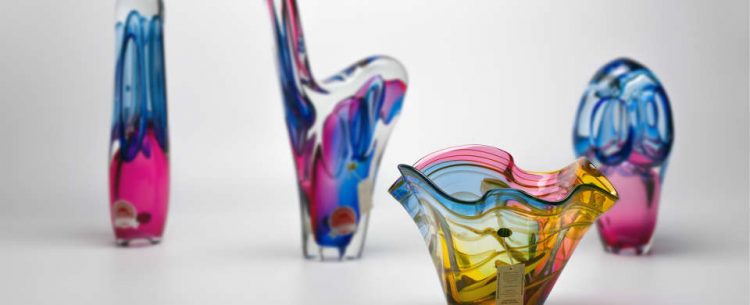The Beginnings of Bohemian Glass
Bohemian glass production began in about 300BC, and by the 10th Century the Bohemian furnaces were producing glass costume jewellery (bijouterie)
The expression Bohemian (from bohème, or bohèmien) surfaced around the mid-nineteenth century in France in relation to the erroneous idea that freedom-loving gipsy travellers came from Bohemia.
Bohemian art glass, also known as Bohemian crystal, is a term used to describe brightly coloured engraved and faceted glassware that was popular in Europe in the 19th century. From then on it became a well-recognised type, like Nailsea glass or Venetian Glass.
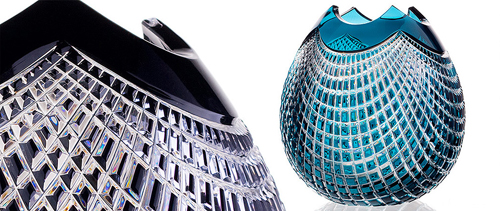
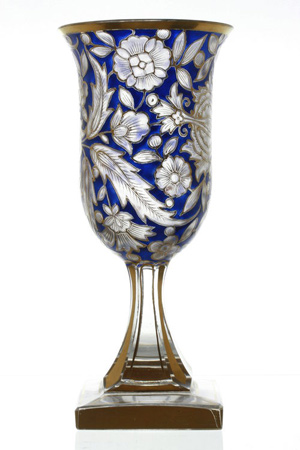
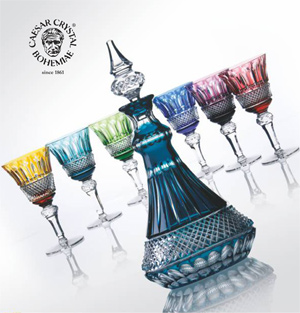
Bohemia is now part of the Czech Republic and was famous for its beautifully coloured glass. As opposed to usual perception this was non-lead.
The history of Bohemia glass started with the plentiful natural resources found in Bohemia and neighbouring Silesia. In the Bohemian countryside, there were large quantities of silica and limestone and plenty of wood for firing the kilns and creating potash.
The oldest Bohemia glass-making sites that have been found in the mountains of Northern Bohemia date to the 13th century and Glass-workers in Bohemia had discovered that when potash was combined with chalk it could be used to create clear, colourless glass that was more stable than glass being produced in Italy.
This new glass could be cut with a little stone or copper wheel and the term Bohemian Crystal emerged, although this was still not lead-based at this time. Glass workers perfected their craft of working with crystal and Bohemian cut crystal became famous for its workmanship and engraving.
By the beginning of the 19th century, English and French lead crystal began competing with Bohemian glass. Lead crystal was glass with a high lead content and lustre and was very good for cutting.
After the decline of business due to the Napoleonic Wars, Bohemian glassworkers learned how to make lead crystal and started their successful comeback. They used the English diamond cut and combined it with more complicated cutting decorations and engravings to create their own unique style.
In the late 19th Century Bohemian exports flourished and coloured glass with painted enamelling depicting floral subjects and lithographic prints of famous paintings were produced in huge quantities in Bohemian factories and sent out to as far afield as America.
Even today, Bohemia Crystal is a well-guarded trademark and every piece of an entire Crystal chandelier, such as prisms and bowls, has to be made in the Czech Republic for the chandelier to carry the label ‘Bohemia Crystal’. Bohemian studio glass artists still wow the world with wonderful cut crystal glass creations.
Bohemian Glass Artists at Boha
Adam Jablonski – Polish Glass Artist
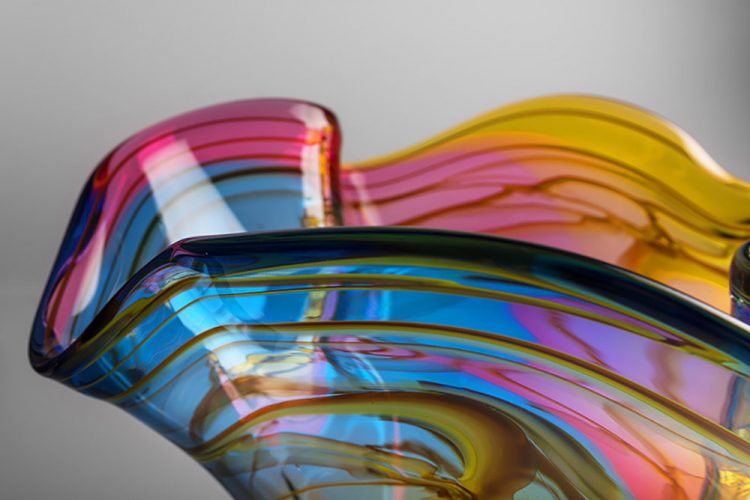
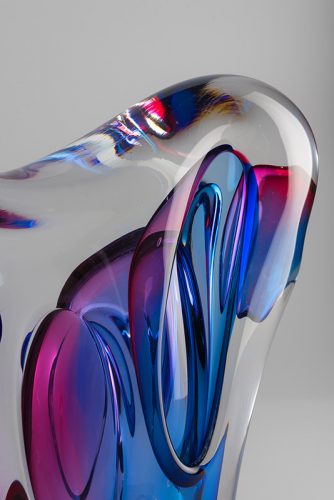
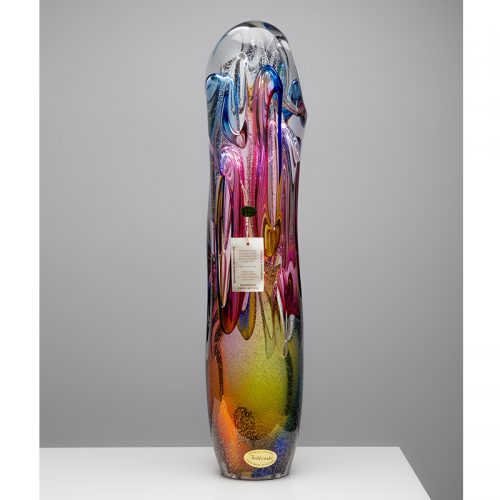
We have some select art glass pieces from Adam Jablonski. He is a world-famous Polish studio glass artist. He has won 12 gold medals in both national and international exhibitions. His Jablonski Glass studio in Wolka Kowsowska, Poland has forged some of the world’s most exciting art glass. His work can be found in galleries and collections across the globe. His art glass is all hand-blown and is made of a quarter lead crystal. Every piece is personally signed by the artist. Adam Jablonski began working with glass in 1952 and he finally closed his studio doors last year.
He is an international legend on the art glass scene with admirers on every continent. Adam Jablonski has patented some fantastic techniques. One of which blends metal and glass into a stunning glass art infusion.
For a brief history of the life and work of Adam Jablonski click here.
Our stock is some of Adam Jablonski’s very last pieces before he retired and closed his studio.
Remigijus Kriukas – Lithuanian Glass Artist
Remi Kriukas is a Lithuanian artist who is well known for producing some exceptionally exciting and innovative pieces. He has mastered control over glass bubbles and weaves them into sumptuous glass ornaments, therefore this Master Glass Artist has many awards and exhibitions under his belt! His modern styling and urban chic have won him admirers across Europe.
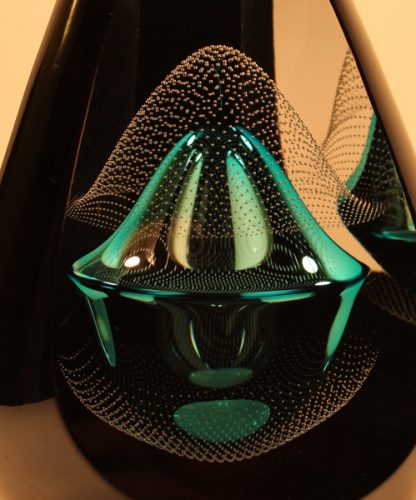
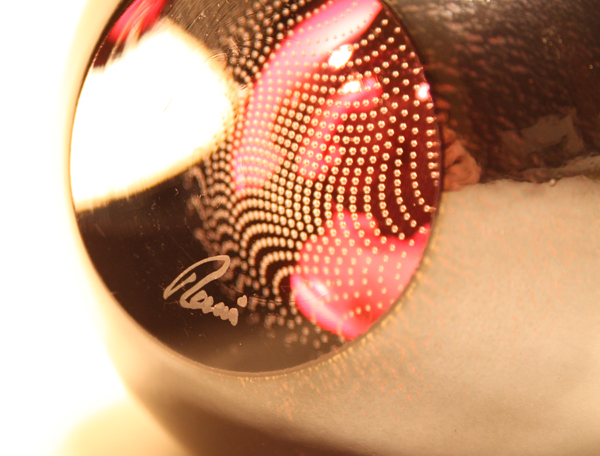
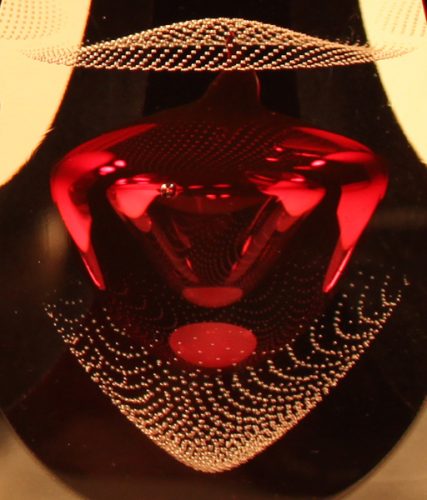

Some of Remigijus Kriukas Glassworks are completely unfathomable and nobody knows how he makes them – it is a closely guarded secret! Certainly, his pieces are sumptuous and gloriously decadent and really add class to any room. The Teggno ornaments are just some of his fantastic creations.
Remi’s glamorous pieces are remarkably popular. In particular, his well-chosen deep hues and metallic styling have made him a popular glass artist with men. Further, many of his items are chosen as corporate gifts for high-net-worth clients and prized staff members.
Marian Pyracek – Polish Glass Artist
Marian Pyrcak is a leading glass maker in the Polish Art Glass scene. For over 30 years he has been practising his craft at his Glassworks just outside Warsaw.
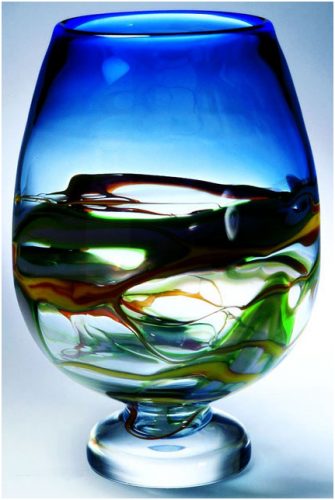
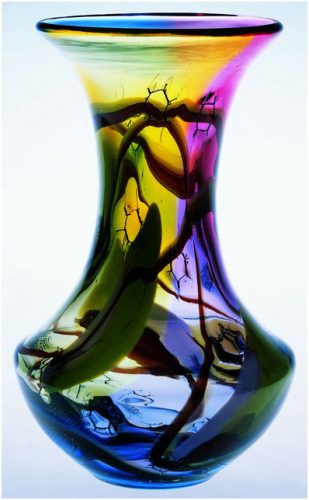
His style is beautifully modern and very colourful, which makes it extremely popular both in Poland and across the world. Indeed, he has won many admirers and his work has become highly collectable in recent years, with prices rising steeply, especially in America.
His style is an eclectic mix of ultra-modern abstract, traditional and highly innovative glass sculptures that capture the imagination. Marian’s works are highly colourful and bring a welcome dash of brightness to the Art Glass market. his pieces are bold and uncompromising and will definitely make a statement in your home.

